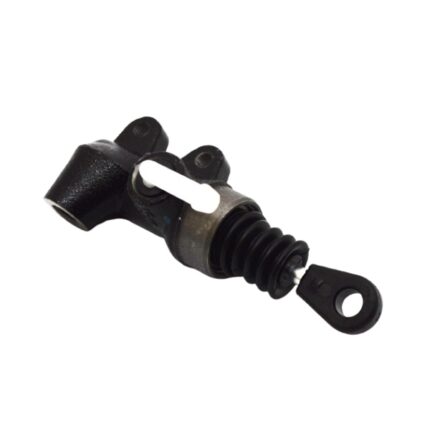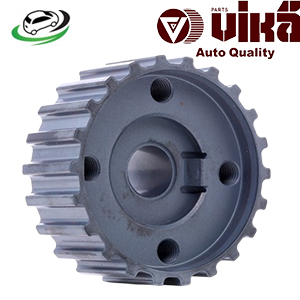Get VW Cabrio III 2.0/ Golf III 2.0/ Jetta III 2.0/ Passat B4 2.0 Oil Pump – With Pick Up Tube 027115105B
The oil pump is a crucial component of an internal combustion engine, responsible for circulating oil throughout the engine’s various components. The oil lubricates moving parts, reducing friction and wear, and helps maintain optimal operating temperatures by dissipating heat. The oil pump works in conjunction with the pickup tube, which draws oil from the oil sump or pan and feeds it into the pump. This comprehensive overview will explore the function, types, design, maintenance, and importance of oil pumps with pickup tubes in automotive engines.
2. Function of the Oil Pump with Pickup Tube
The oil pump, along with its pickup tube, plays several key roles in engine operation:
- Lubrication: The primary function of the oil pump is to ensure that engine oil reaches critical components such as bearings, pistons, and camshafts. Proper lubrication prevents metal-to-metal contact, reducing wear and extending engine life.
- Cooling: Oil helps to dissipate heat generated by engine operation. The oil pump circulates oil through the engine, allowing it to absorb heat and carry it to the oil cooler, where it can be dissipated.
- Cleaning: Engine oil carries dirt, debris, and contaminants away from engine components. The oil pump ensures that these contaminants are circulated to the oil filter, where they can be removed before the oil re-enters the engine.
- Hydraulic Operation: In some engines, oil pressure is used for hydraulic components, such as hydraulic lifters or variable valve timing systems. The oil pump generates the necessary pressure for these systems to function correctly.
- Pressure Regulation: The oil pump maintains the proper oil pressure within the engine. Adequate oil pressure is essential for effective lubrication and preventing engine damage.
3. Types of Oil Pumps
Oil pumps come in various types, each suited to different engine designs and requirements:
- Gear Pumps: Gear pumps are the most common type of oil pump used in automotive applications. They consist of two gears that mesh together to create a vacuum, drawing oil into the pump and pushing it out under pressure. Gear pumps are known for their reliability and efficiency.
- Rotary Vane Pumps: These pumps use a rotating mechanism with vanes that move in and out of slots. As the vanes rotate, they create a vacuum that draws oil in and forces it out under pressure. Rotary vane pumps are less common but can be found in some applications.
- Lobe Pumps: Lobe pumps utilize two or more lobes that rotate to create a pumping action. While they are less common in automotive applications, they are used in specific industrial applications where gentle handling of fluids is required.
- Electric Oil Pumps: In some modern vehicles, electric oil pumps are used to provide precise control over oil circulation. These pumps can be activated based on engine demands, improving efficiency and performance.
4. Design and Construction of Oil Pumps with Pickup Tubes
The design of oil pumps with pickup tubes is crucial for their effective operation. Key components include:
- Pump Housing: The pump housing is typically made from cast aluminum or iron and encloses the internal components of the pump. It is designed to withstand high pressure and provide a secure environment for oil circulation.
- Pickup Tube: The pickup tube is a tube that extends from the oil pump into the oil pan. It draws oil from the pan and feeds it into the pump. The design of the pickup tube is critical for ensuring that the pump receives an adequate supply of oil, especially during high-performance operation.
- Gears or Rotors: Depending on the type of pump, gears or rotors are the primary components that create oil flow. The design and material of these components affect the pump’s efficiency and durability.
- Oil Pressure Relief Valve: Many oil pumps are equipped with a pressure relief valve that prevents excessive pressure buildup in the system. This valve opens when the pressure exceeds a certain threshold, allowing excess oil to return to the oil sump.
- Seals and O-Rings: Seals and O-rings prevent oil leaks and maintain pressure within the pump. High-quality materials are essential to withstand the heat and pressure of engine operation.
5. Importance of Oil Pumps with Pickup Tubes
Oil pumps with pickup tubes are essential for several reasons:
- Engine Longevity: Proper lubrication is critical for reducing wear and tear on engine components. A functioning oil pump ensures that oil circulates effectively, prolonging the life of the engine.
- Optimal Performance: Adequate lubrication is necessary for optimal engine performance. Insufficient oil flow can lead to increased friction, heat, and ultimately engine failure.
- Heat Management: The oil pump helps regulate engine temperature by circulating oil, which absorbs and dissipates heat. Effective heat management prevents overheating, which can cause significant damage to the engine.
- Contaminant Removal: The oil pump plays a key role in keeping the engine clean. By circulating oil through the filter, it removes contaminants and debris, ensuring that clean oil reaches critical components.
- Pressure Maintenance: Maintaining the correct oil pressure is vital for proper engine operation. The oil pump regulates pressure, ensuring that all components receive adequate lubrication.
6. Signs of a Failing Oil Pump with Pickup Tube
Identifying a failing oil pump is crucial to prevent engine damage. Common signs include:
- Low Oil Pressure Warning Light: Most vehicles are equipped with an oil pressure warning light. If this light illuminates, it may indicate a problem with the oil pump or a low oil level.
- Engine Noise: Unusual noises, such as ticking or knocking sounds, can indicate insufficient lubrication due to a failing oil pump. These sounds often signify increased friction between moving parts.
- Oil Leaks: Visible oil leaks around the oil pump or pickup tube may indicate a failing seal or damaged component. Leaks can lead to a loss of oil pressure and insufficient lubrication.
- Overheating Engine: An overheating engine can be a sign of inadequate oil circulation. If the oil pump is not functioning correctly, the engine may not receive sufficient cooling.
- Decreased Engine Performance: A failing oil pump can lead to decreased engine performance, including reduced power output and poor throttle response.
7. Maintenance of Oil Pumps with Pickup Tubes
Regular maintenance is essential for ensuring the longevity and performance of oil pumps with pickup tubes. Key maintenance tips include:
- Regular Oil Changes: Change the engine oil and filter regularly according to the manufacturer’s recommendations. Fresh oil helps maintain optimal lubrication and prevents sludge buildup.
- Check Oil Level: Regularly check the oil level in the engine. Low oil levels can lead to inadequate lubrication and damage to the oil pump.
- Inspect for Leaks: Periodically inspect the oil pump and pickup tube for signs of leaks. Address any leaks promptly to prevent oil loss and pressure issues.
- Monitor Oil Pressure: Pay attention to the oil pressure gauge or warning light. Any fluctuations in oil pressure should be investigated promptly.
- Use Quality Oil and Filters: Use high-quality oil and filters recommended by the manufacturer. Quality oil helps maintain optimal lubrication and performance.
8. Replacing the Oil Pump with Pickup Tube
Replacing an oil pump with a pickup tube can be a complex process, but it is manageable for those with mechanical skills. Here are general steps for replacement:
- Gather Tools and Supplies: Before starting, gather necessary tools, including wrenches, sockets, a torque wrench, and a replacement oil pump with pickup tube. Ensure the vehicle is parked on a level surface.
- Disconnect the Battery: Safety is paramount. Disconnect the negative terminal of the battery to prevent electrical shorts during the replacement process.
- Drain the Engine Oil: Place a container under the oil pan to catch the oil. Remove the oil drain plug and allow the oil to drain completely.
- Remove the Old Oil Pump: Depending on the vehicle, you may need to remove the oil pan to access the oil pump. Disconnect any lines or hoses connected to the pump and remove the mounting bolts to take out the old pump.
- Install the New Oil Pump: Position the new oil pump and pickup tube in place, ensuring proper alignment. Secure it with mounting bolts and reconnect any lines or hoses.
- Reinstall the Oil Pan: If you removed the oil pan, reinstall it using new gasket material if necessary. Ensure all bolts are tightened to the manufacturer’s specifications.
- Refill Engine Oil: After installation, refill the engine with the appropriate type and amount of oil. Follow the manufacturer’s specifications for oil type.
- Reconnect the Battery: Once everything is in place, reconnect the battery and start the engine. Check for any leaks around the oil pump and ensure proper oil pressure.
- Check Operation: After installation, monitor the engine for any unusual noises or warning lights. Ensure that the oil pressure is within the normal range.
9. Conclusion
The oil pump with pickup tube is a vital component in maintaining engine lubrication and performance. Its ability to circulate oil throughout the engine, manage temperature, and remove contaminants is crucial for the longevity and efficiency of internal combustion engines.
Regular maintenance and timely replacement of the oil pump are essential for preventing issues that can lead to costly repairs and unsafe driving conditions. By understanding the function, design, and importance of oil pumps with pickup tubes, vehicle owners can ensure their engines operate at peak efficiency, contributing to a safe and enjoyable driving experience. In summary, the oil pump with pickup tube is an indispensable part of the engine lubrication system, playing a critical role in vehicle performance and reliability.
Follow us on Facebook for more parts.




Reviews
Clear filtersThere are no reviews yet.